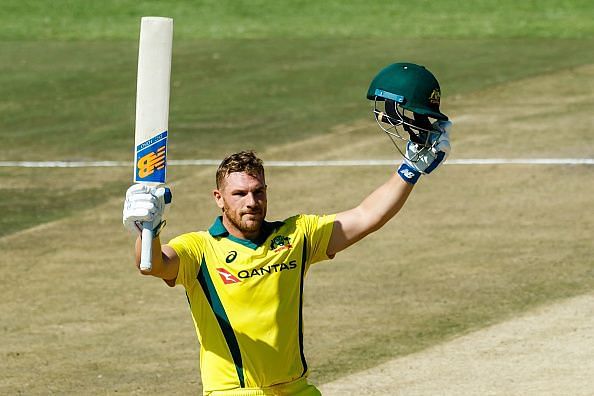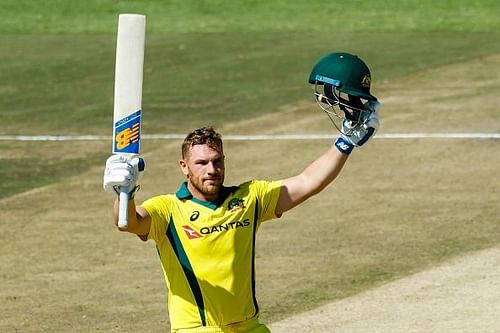
Why a double hundred in T20s isn't a far-fetched idea any more

Australia’s current T20 captain, Aaron Finch, seems the archetypical opener from down under ‑ muscular, dominant and quick scoring. A player on the wrong side of the 30s, Finch’s role as a senior anchor in the team assumes more importance in the aftermath of the Sandpaper Gate.
And the responsibilities don’t appear to be burdening the Victorian, who on Tuesday blasted a 76-ball 172, laced with 16 fours and 10 sixes against a depleted Zimbabwean attack. An Australian win was never under any threat as Zimbabwe could muster only 129 in 20 overs.
Finch’s gigantic hundred, coming with the noise of England’s 481 at Trent Bridge still lingering in the background, one wonders‑ is a T20 double hundred really that far-fetched an idea?
Not very long ago, well maybe some time ago, when T20 was in its nascent stage, people scoffed at the idea of someone scoring a hundred in 20 overs. Naturally, for those who grew up watching Tests and ODIs, a batsman scoring a 100 on his own in an innings of 120 balls at the most, seemed an imaginary world, a world of wishful thinking.
Chris Gayle brought that imaginary world down to meet reality in just the opening T20I match of the inaugural T20 World Cup in 2007, scoring 117 off just 57 deliveries against a South African featuring Shaun Pollock and Makhaya Ntini.
A decade later, hundreds in T20s are no more an anomaly. We are halfway into 2018 and already 5 T20I hundreds have been scored. And the world of domestic leagues will certainly provide a much bigger number of centuries scored.
With the barrier of hundreds well and truly crossed over, Is a 200 not out of 80 balls soon on the cards?
Finch’s recent bashing of the helpless Zimbabwean throws up an interesting paradox on the right-handed batsman’s career so far. For starters, he doesn’t have a 150 plus score in an ODI; in T2OIs, he already has two. In only 2 out of his 11 ODI hundreds, does Finch score at a strike rate of more than 100. Yet he went on to score a colossal 172 runs at a strike rate of 226. How?
A combination of shorter boundaries, better bats, more muscular and skill training, the current generation of batsman has much more power and confidence in his abilities to clear the role, regardless the stationing of a fielder on the boundary or not.
With the luxury of 10 wickets in the bag for an innings of 20 overs, openers like Finch have really prospered in the shortest format of the game. Madness, sheer madness has come to define them, and therefore it’s no surprise then that the biggest names in the newest format; barring a few, are all openers.
That’s why Finch plays the way he does in T20I cricket, where he averages close to 48 with a strike rate of 160. In ODIs however, it’s not the case as he psychologically feels more responsible, something which reflects in his career strike rate of 90.30.
The case of Finch is intriguing, as in him one can find traces of a futuristic batsman- explosive in T20s, very good in ODIs, but not quite there yet in Tests (if it survives). And it is this crop of players who offer the greatest hope to the dream of a double hundred in T20s, a dream that looks more and more possible each day.
For someone who has rewritten the T20 record books twice in the last five years, Aaron Finch might want to rewrite it once more, hopefully, this time with a double hundred against his name.